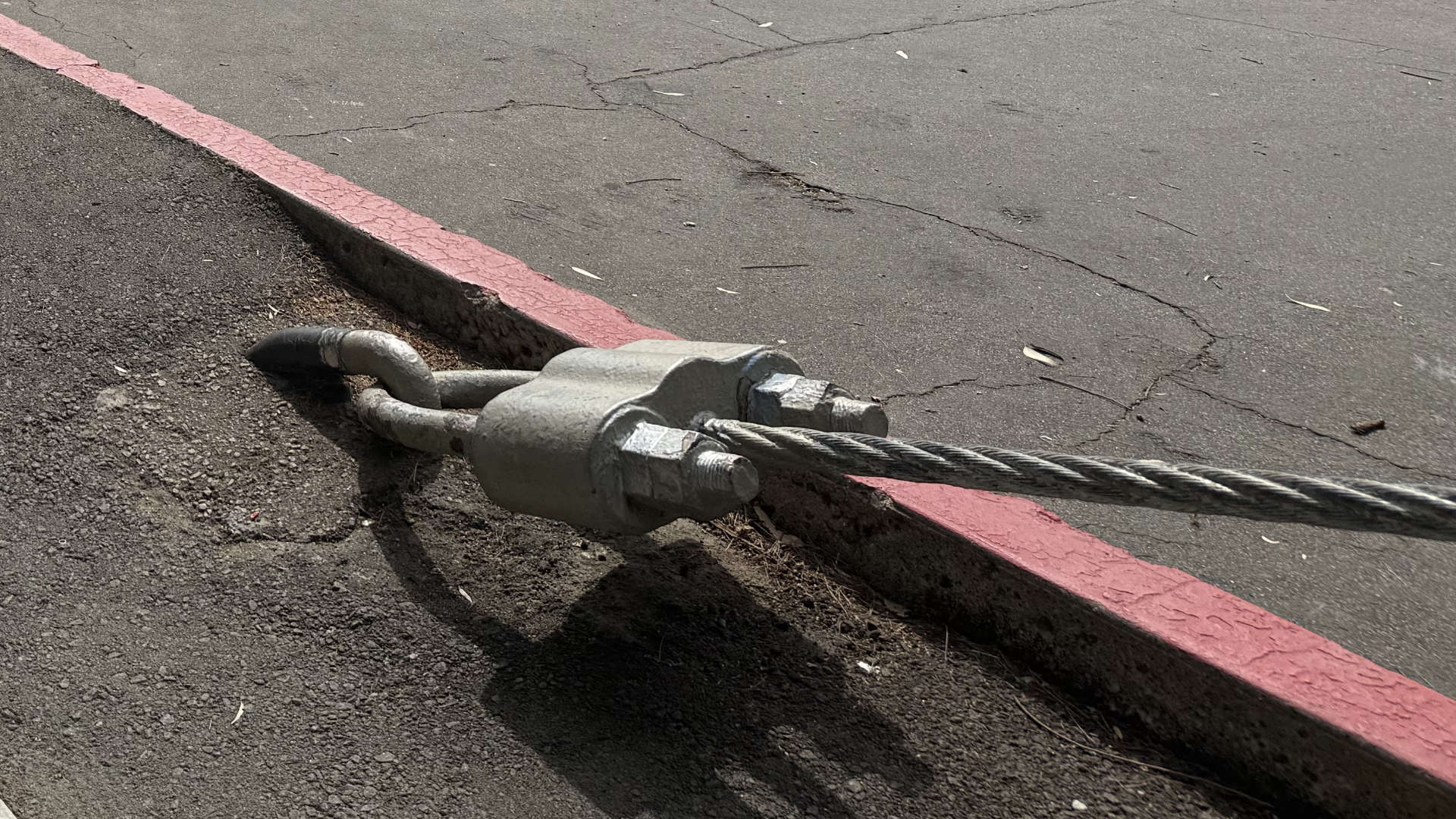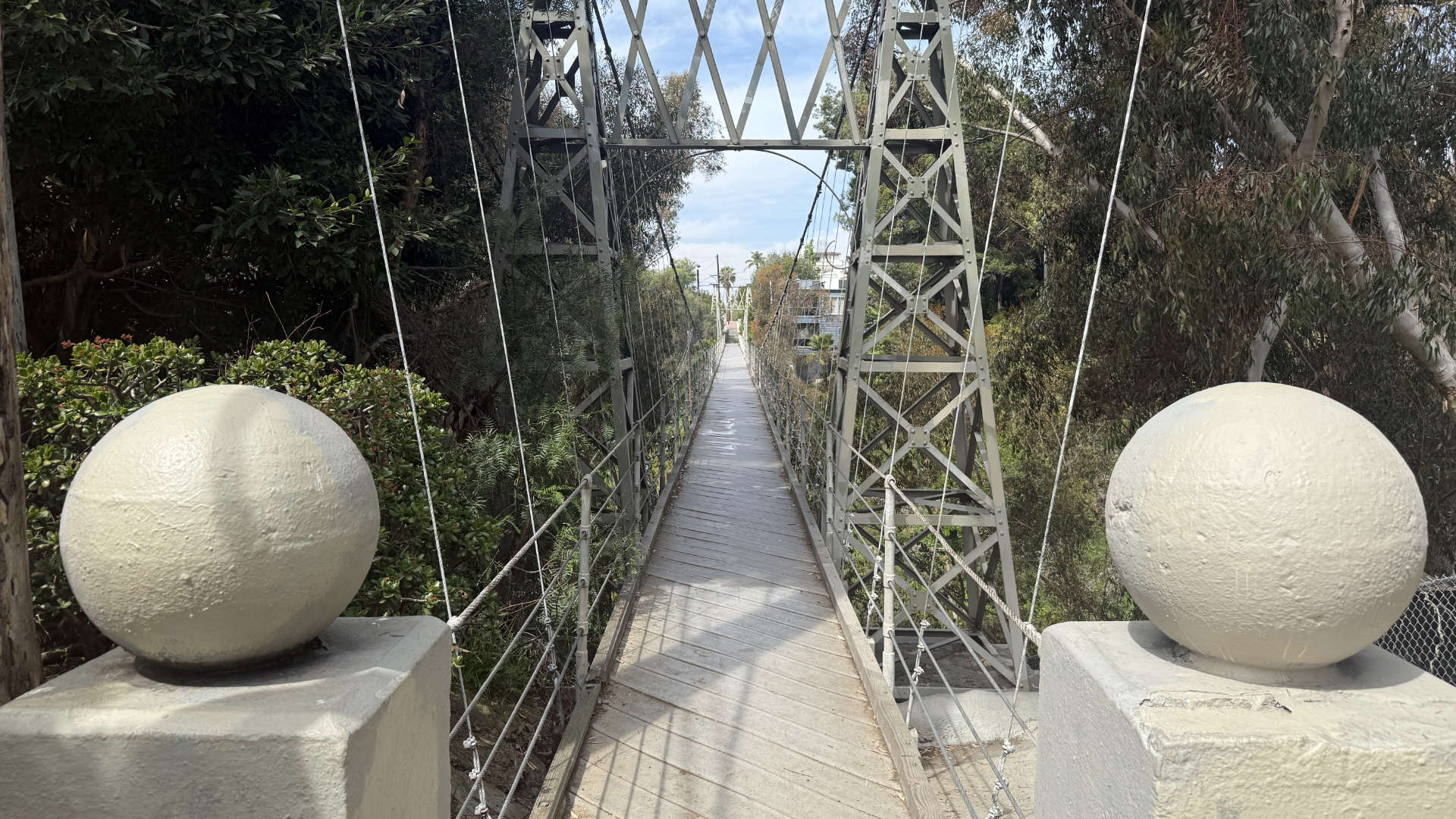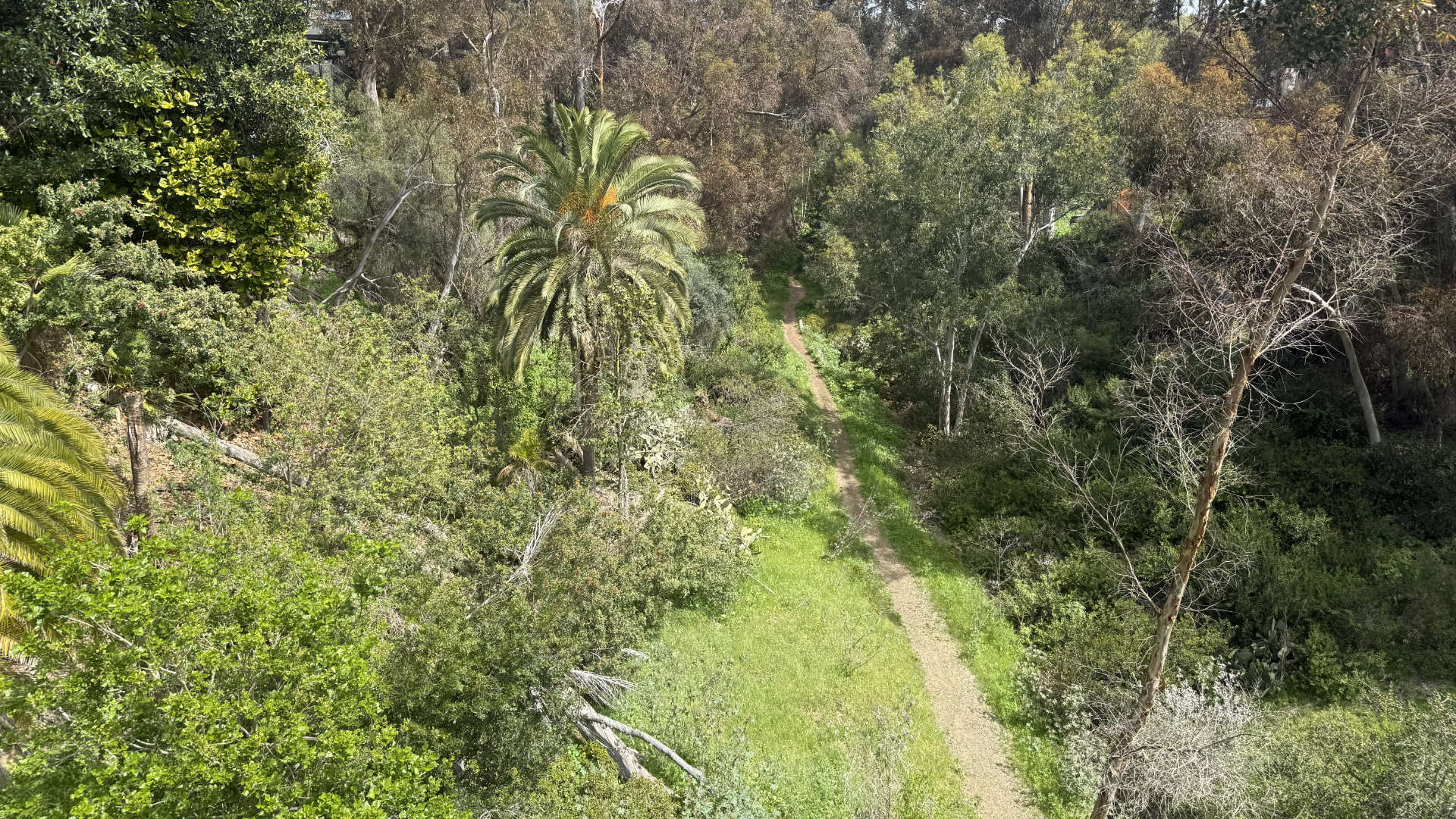Engineering Elegance: Design and Structure
A Simple Suspension Span

The Spruce Street Bridge is fundamentally a simple suspension bridge, designed specifically for pedestrian use. Its design, while elegant, relies on core suspension principles: strong steel cables are draped between supports and anchored firmly at each end, carrying the load of the walkway suspended below.
These main suspension cables are anchored into massive concrete piers, cleverly hidden beneath the soil at both the east and west approaches, providing the necessary counter-tension. Supporting towers or pylons elevate the cables, allowing the deck to hang gracefully across the canyon. Some sources also describe it as a three-span suspension bridge, likely referring to the sections between the towers and anchors.
By the Numbers: Dimensions and Capacity
The bridge presents impressive dimensions for a pedestrian structure of its era. It stretches 375 feet (approximately 114 meters) in total length, spanning the entirety of the canyon below. The walkway itself is relatively narrow, measuring just 5 feet (about 1.5 meters) wide, emphasizing its pedestrian focus.
Perhaps most dramatically, the deck hangs 70 feet (21 meters) above the floor of Kate Sessions Canyon, offering dizzying views directly below. Despite its seemingly delicate appearance, the bridge was engineered for significant loads. Figures suggest a maximum capacity of 327,900 pounds (148,700 kg) or, as Capps reportedly calculated, enough to support 164 tons, equivalent to over 2,000 people.
| Feature | Details |
|---|---|
| Location | Bankers Hill, San Diego (Spruce St between Front St & Brant St) - Visit Info |
| Crosses | Kate Sessions Canyon (also Arroyo/Paloma Canyon) - More Below |
| Type | Pedestrian Suspension Bridge |
| Architect/Engineer | Edwin M. Capps - History |
| Year Completed | 1912 (widely cited); Opened late 1911 (per contemporary report) |
| Total Length | 375 ft (114.3 m) |
| Main Span | ~375 ft / 114.3 m (Sources vary slightly) |
| Height Above Canyon | 70 ft (21 m) |
| Deck Width | 5 ft (1.52 m) |
| Designated Capacity | ~164 tons / ~328,000 lbs |
| Historic Status | San Diego Historic Landmark #116 (Jan 7, 1977); Contributing Structure to proposed Heart of Bankers Hill National Register Historic District |
| Owner | City of San Diego |
Materials: From Original Wood to Modern Reinforcements

The bridge utilizes fundamental materials common to suspension structures. The critical load-bearing cables are made of steel wire. These are securely fastened into the massive concrete anchors hidden at each end.
Descriptions of the towers/pylons vary across sources and time. Some early accounts or general descriptions mention concrete towers, while technical databases and renovation details specify steel. Specifically, the 1985 rehabilitation project documentation refers to "laced-steel towers", suggesting this is likely the material composition following that renovation, though the original material might have differed.
The deck material history also shows evolution. The original walkway was constructed of wood. Concerns about durability under increasing use led to its replacement with a steel grid deck in the 1970s. However, intriguingly, the 1985 renovation report mentions the installation of a "pressure-treated wood deck". This creates some ambiguity about the current deck material. Without a more recent, definitive assessment, it's clear the deck has undergone significant changes, possibly reverting to wood after the steel grid phase, or perhaps incorporating elements of both over time. This evolution reflects the ongoing efforts to maintain the bridge's structural integrity while adapting to changing needs and preservation standards.
The Famous "Wiggle": Understanding the Sway

One of the most talked-about characteristics of the Spruce Street Suspension Bridge is its tendency to sway, earning it the nickname "Wiggly Bridge". This movement is not a sign of instability but an inherent feature of its lightweight suspension design.
Suspension bridges are engineered to have a degree of flexibility to respond to forces like wind and the dynamic load of pedestrians crossing. The lightness of the Spruce Street Bridge means this movement is more noticeable than on larger, heavier structures.
Walking across, especially near the center, one can feel a distinct, gentle side-to-side motion, particularly if there's a breeze or other people are walking. While this sensation is part of the bridge's unique charm and a highlight for many visitors, it can be slightly unnerving for those with a fear of heights, given the 70-foot drop below. City reports have noted that occasional damage to non-critical components (like flanges) can occur due to people intentionally trying to make the bridge swing excessively, but the structure itself remains sound. The "wiggle" is simply part of the authentic experience of this historic footbridge. Ready to feel it? Plan your visit!
The Setting: Spanning Kate Sessions Canyon

The bridge dramatically spans Kate Sessions Canyon, located in the heart of the Bankers Hill neighborhood. This canyon is sometimes referred to as Arroyo Canyon, and historical records indicate it was once called Paloma Canyon. It's important to distinguish this specific canyon from the well-known Kate Sessions Memorial Park, which is situated several miles away in the Pacific Beach / La Jolla area. Both are named in honor of Kate Sessions, the pioneering horticulturalist often called the "Mother of Balboa Park". The shared name can easily lead to confusion for visitors.
The canyon crossed by the Spruce Street Bridge is a deep ravine, plunging 70 feet below the walkway. From the bridge deck, visitors can peer down into the canyon, which is filled with a mix of vegetation, including towering eucalyptus trees (some possibly planted by Sessions herself), various palm species, and other non-native plants. This specific canyon setting provides the dramatic context for the suspension bridge, offering unique perspectives both from the bridge looking down and potentially from the canyon floor looking up (see Explore Nearby for notes on accessing the floor).